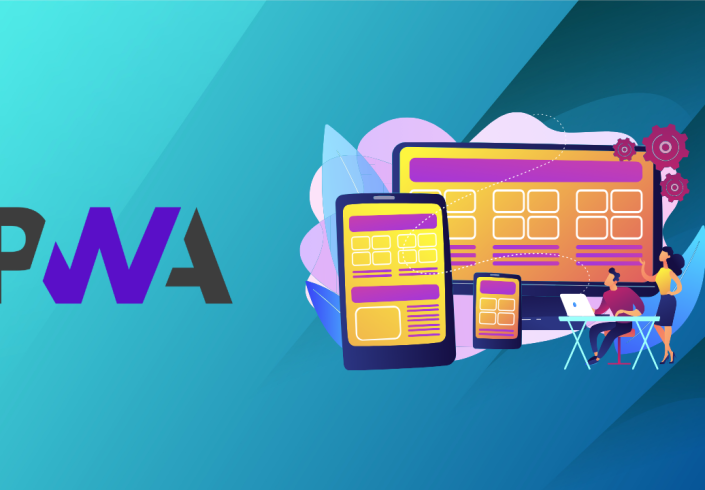
Scrum Development: An Agile Framework for High-Performance Teams
In the world of software development, agility and flexibility are crucial for meeting the constantly evolving needs of users and stakeholders. Scrum, a popular Agile framework, has become one of the go-to methods for managing software projects. It offers a structured yet flexible approach that helps teams deliver high-quality products in short, iterative cycles.
What is Scrum Development?
Scrum is a simple, Agile framework built to boost collaboration, accountability, and continuous improvement in software development. It breaks projects down into smaller, manageable chunks called sprints, usually lasting between 1 and 4 weeks. At the end of each sprint, the team delivers a product increment ready to be shipped so they can get quick feedback and make adjustments as needed.
The Scrum framework focuses on teamwork, openness and transparency, and flexibility. It ensures that development stays in line with business goals and users’ actual needs.
Core Roles in Scrum
One of the standout features of Scrum is how clearly defined the roles are within a Scrum team. There are three key roles:
- Product Owner:
The Product Owner is in charge of defining the product vision and managing the product backlog. They make sure the team is working on the most valuable features and priorities based on what customers need and what stakeholders want. They act as a link between the development team and everyone outside of it. - Scrum Master:
The Scrum Master is like a coach and facilitator for the team. They ensure the Scrum process is being followed and help clear any roadblocks that might slow the team down. The Scrum Master also supports the Product Owner by helping manage the product backlog and promoting a culture of continuous improvement. - Development Team:
The development team is made up of the people who do the actual work to deliver the product. This self-organising, cross-functional team includes developers, designers, testers, and others who work together to complete tasks in the sprint backlog. The team is responsible for managing its own work and making sure each sprint ends with something that can potentially be shipped.
Scrum Events: The Heart of the Framework
Scrum has several important events (or ceremonies) that help structure the team’s workflow and encourage communication and collaboration:
- Sprint Planning:
This event kicks off the sprint. The whole Scrum team gets together to set the goals for the upcoming sprint, picking items from the product backlog to work on. They also figure out how to deliver those items and assign tasks to the team members. - Daily Scrum (Stand-Up):
The Daily Scrum is a quick, 15-minute meeting held every day. Each team member answers three key questions: What did I accomplish yesterday? What will I work on today? Are there any blockers? It helps the team stay aligned and makes sure any problems get addressed right away. - Sprint Review:
At the end of the sprint, the team shows the completed work to stakeholders during the Sprint Review. This is a chance for feedback and a demo of the product increment. Based on the feedback, the product backlog might be updated to reflect new priorities or insights. - Sprint Retrospective:
After the Sprint Review, the Scrum team holds a retrospective to talk about how the sprint went. They discuss what went well, what could be better, and how to make the next sprint more effective. This event is all about continuous improvement, which is a key part of Scrum.
Scrum Artifacts: Key Tools for Transparency
Scrum has a few key artifacts that help track progress and keep everything transparent during development:
- Product Backlog:
The Product Backlog is a constantly evolving, prioritised list of features, enhancements, bug fixes, and technical tasks needed to complete the product. The Product Owner is in charge of keeping the backlog updated and making sure it reflects the most valuable work that needs to be done. - Sprint Backlog:
The Sprint Backlog is a list of tasks and user stories the team commits to completing in the current sprint. It’s basically a slice of the Product Backlog, selected during Sprint Planning, and helps the team stay focused on the work for that sprint. - Increment:
The Increment is the total of all the completed items from the Product Backlog by the end of the sprint. It needs to be in a “potentially shippable” state, meaning it’s fully tested and meets the team’s definition of being done.
Benefits of Scrum Development
- Increased Flexibility and Adaptability:
Scrum makes it easy for teams to adjust quickly to changes in requirements, customer feedback, or market shifts. Since Scrum works in short, iterative cycles, the product can evolve based on what’s learned in real-time. - Faster Delivery of Value:
By breaking work into short sprints and delivering a potentially shippable product at the end of each sprint, Scrum ensures that customers get to see and use valuable features early and often. - Improved Collaboration and Communication:
Scrum emphasises communication, both within the team and with stakeholders. Daily stand-ups, sprint reviews, and retrospectives help keep everything transparent and ensure everyone stays aligned and focused. - Higher Quality and Continuous Improvement:
Scrum encourages constant testing and feedback, which leads to higher-quality results. The focus on retrospectives also allows teams to reflect on and improve their processes over time. - Clear Accountability and Ownership:
Scrum clearly defines roles so everyone knows their specific responsibilities. This helps create accountability and encourages everyone to take ownership of their tasks.
Challenges of Scrum Development
While Scrum has a lot of benefits, it can also come with some challenges, especially for teams that are new to Agile practices:
- Adapting to Change:
Some teams or organisations might struggle with Scrum’s flexible, iterative approach, mainly when used with traditional waterfall methods. Change can be challenging to embrace at first. - Requires Strong Collaboration:
Scrum depends heavily on good collaboration and communication. If team members or stakeholders aren’t fully on board, Scrum can be less effective and harder to manage. - Scope Creep:
If the Product Backlog isn’t properly managed, the scope may grow too big for what can realistically be achieved in a sprint, leading to delays or quality issues.
Conclusion
Scrum is a popular and effective Agile framework that helps teams deliver high-quality software in manageable, iterative cycles. By focusing on collaboration, flexibility, and continuous improvement, Scrum allows teams to adapt quickly to changing requirements and deliver customer value faster than traditional methods. However, to make Scrum work, commitment, discipline, and strong collaboration from everyone involved—team members and stakeholders alike.
For organisations aiming to improve their software development processes, Scrum provides a structured yet flexible approach that boosts efficiency, transparency, and customer satisfaction.
We’re here to turn your ideas into reality!
Contact Us










